Things to Do When Your Car Is Stuck in Snow
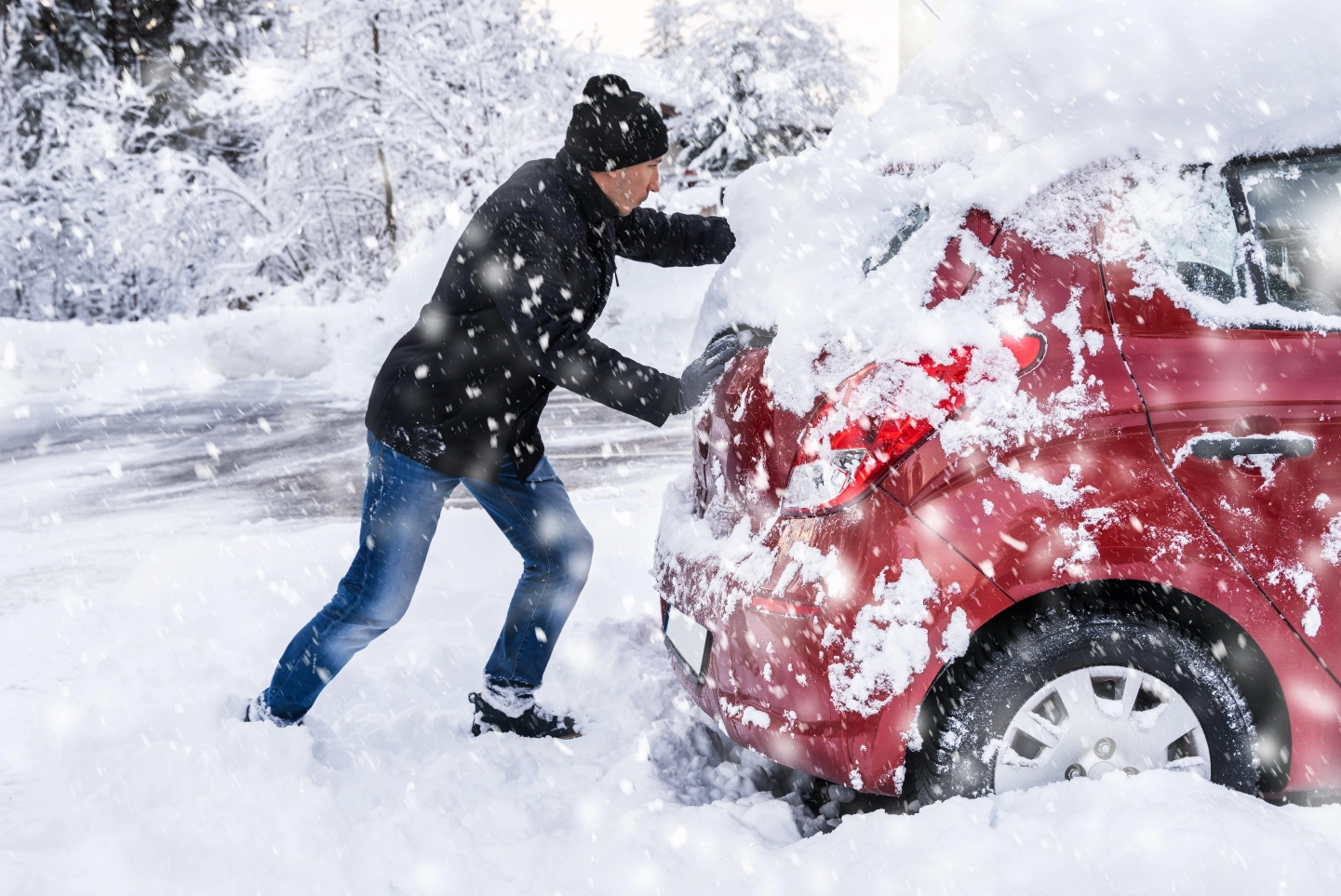

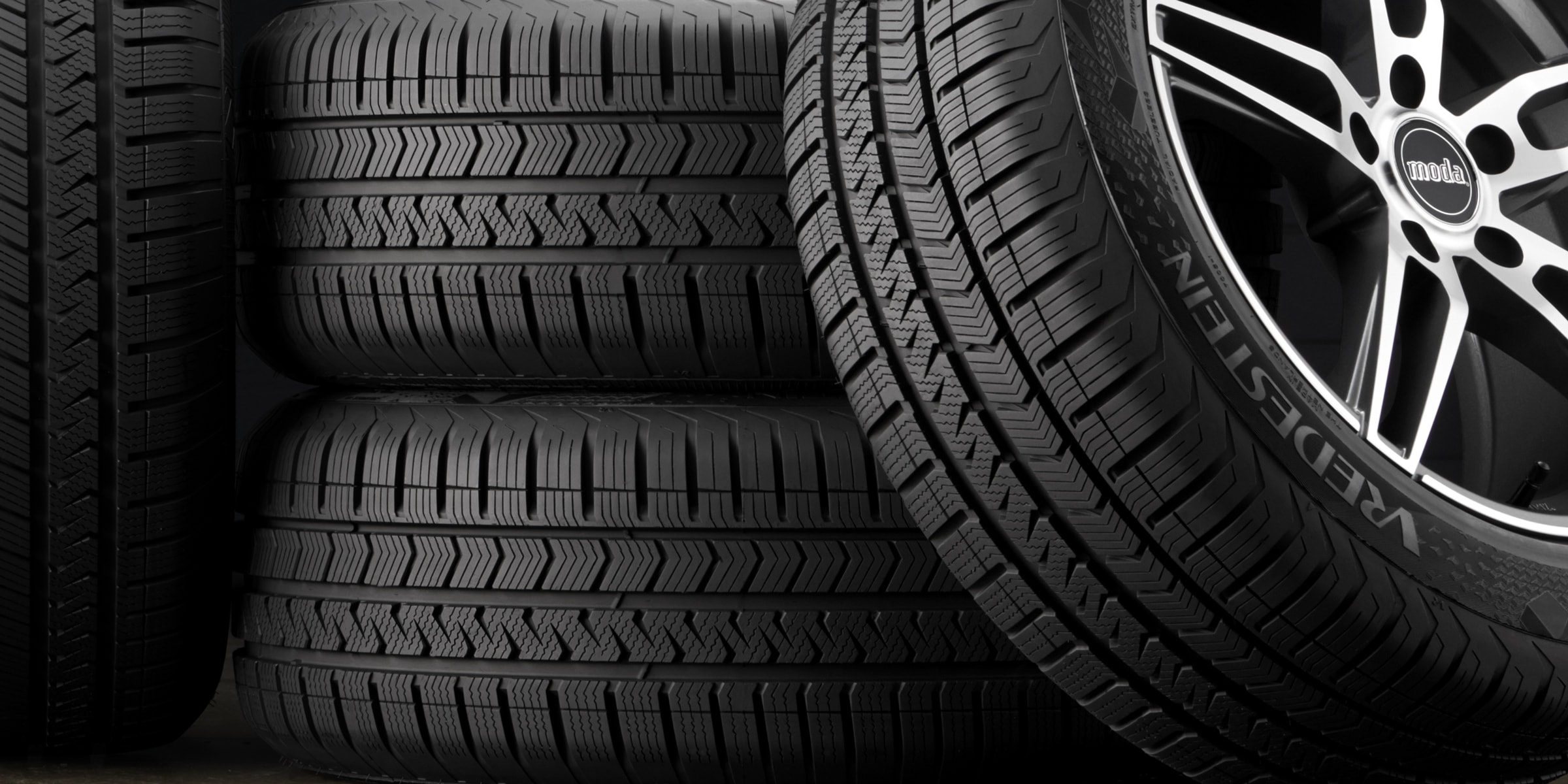
New tires are an inevitable expense, but telling when it’s time to get new tires may not be widespread knowledge to all drivers. Conflicting information from friends and family, from what you read online, etc. may make diagnosing your tire situation a dubious task.
Here are the five telltale signs you should check to determine if you need new tires.
1. Low tire tread depth
To test tire tread depth insert a quarter upside down into the tread. If it doesn’t cover George Washington’s hairline, it means the tread is less than 4/32 of an inch deep, and it’s about time to bite the bullet and get new tires. In many states, just 2/32 of an inch is considered the minimum legal tread depth. However, more tread is safer.
Tests conducted showed a car going 70 miles per hour with tread of 2/32 of an inch took 5.9 seconds to stop and required a distance nearly double that of a vehicle with new tires. Meanwhile, with treads that were 4/32 of an inch, while it still took 100 feet more to stop and 1.2 seconds longer, this was much better than what was achieved with the minimal 2/32 of an inch tread.
2. Tires are old
No matter how rock-solid the tires were when you first purchased them, time leaves its mark. With age, rubber becomes brittle. In addition, the tire’s reinforcing cords can weaken over time. It’s important to know how often to replace your tires. Even if the tread appears intact, most manufacturers advise you to replace your tires after six years.
If you look at the side of the tire, you’ll see the manufacturer’s code. The last four numbers here indicate the production date. If this is 3009, for example, it means that the tire was produced in the 30th week of 2009 and it may be time to get new tires. In more severe climates where you may routinely deal with extreme heat, the ultraviolet rays of the sun may impart structural changes in your tires. This may mean that you will have to make the change sooner.
3. Tire sidewall cracking
Look beyond the tread to the sidewall of the tires. Are there any noticeable cuts or grooves? If so, you may be wise to purchase new tires, since these can be signs that a leak is developing or that the tire is weakening and may soon blowout.
4. Bulge in tire sidewall
If the tire has begun to weaken, sometimes the rubber may begin to bulge. This is a red flag, indicating that the tire has begun to fail and may unexpectedly blow out at any time, putting you and your passengers in jeopardy.
5. Vibrations while driving
Has the ride recently seemed very rough or have you noticed vibrations while driving? If so, this can be a sign that your tires are indeed shot, and it’s time to put aside your skepticism and get new ones.
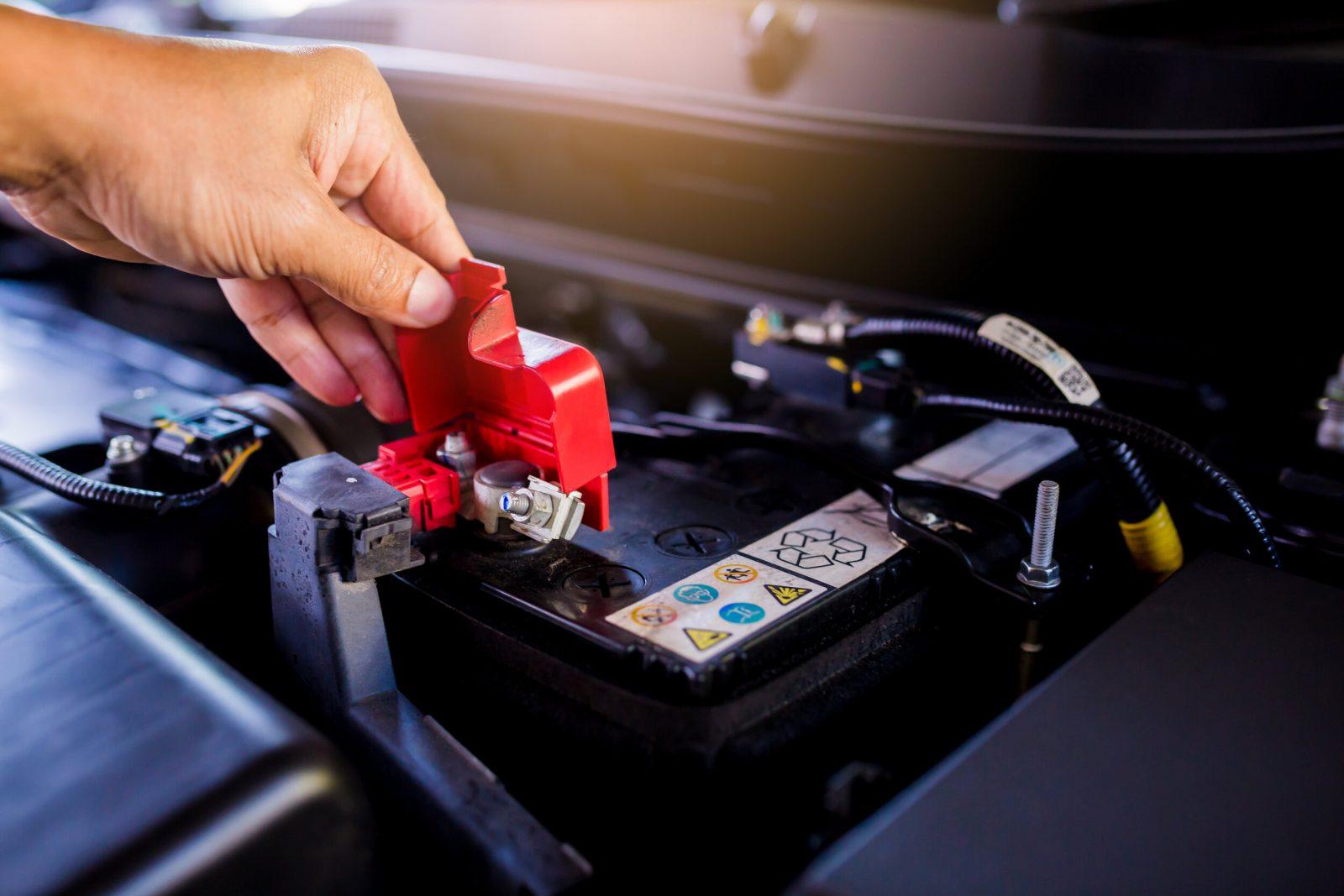
Car batteries are an essential part of an automobile. From getting your car started to charging your phone on-the-go, batteries provide the zap your vehicle needs to keep rolling. That’s why it’s so important to know when to start considering a car battery change, as well as what you can do to extend its lifespan.
On average, car batteries last between 3 and 5 years. One of the most important factors that affects how long a car battery will last is the weather. A running engine under the hood is already producing high levels of heat. Throw in a scorching hot day and you have a severe drain on your car battery, which can lead to an increased chance of a dead battery if you don’t take proper summer driving precautions.
Warm weather can cause fluid in car batteries to evaporate, damaging the internal structure of the battery. That’s why average battery life is shorter in warmer climates. So when estimating how long your car battery life will last, consider the climate you will do most of your driving in.
Regardless of the temperature you drive in, properly taking care of your car battery can help keep it running. Check out the seven tips below on extending the life of your car battery:
1. Limit Short Rides
Quick car rides prevent your car’s battery from fully charging. Maintain your car’s battery power by driving it frequently and for extended periods. If you don’t use your car often, consider investing in a portable car battery charger. These portable chargers can jump start your battery without another vehicle in case you’re ever stranded.
2. Keep Your Battery Tightly Fastened
A battery that’s not securely fastened could vibrate, potentially resulting in internal damage and short circuits. Have your battery terminal checked regularly – especially if you frequently drive on bumpy roads – to ensure it is tightly and properly positioned in the mounting bracket.
3. Turn Off All the Lights When You Exit
Accidentally keeping your headlights and car door lights on can put a heavy toll on your vehicle’s battery. To keep yourself from forgetting, post a note on your dashboard, attach a sticker reminder on your car remote or park in a direction where you must walk past your headlights to get to your destination.
4. Control the Corrosion
Battery terminals corrode over time but keeping them clean from buildup is a great way to extend the life of your car battery. Scrub the terminals with a toothbrush dipped in a baking soda and water mixture. Then, using a spray bottle with cold water, rinse the mixture off and follow up with a thorough drying with a clean cloth.
5. Test Your Battery Often
Knowing the condition of your car battery matters when you want to maximize its life. Test your battery’s output voltage level with a car battery tester to keep track of how well you’re maintaining it and if you’re due for a new one.
6. Don’t Use Electronics While Idling
Turn off functions like the radio or air conditioner when your engine isn’t running to put less wear and tear on your battery power. Extended periods of idling also can wear a battery down.
7. Care for Your Whole Car
Your car is comprised of many parts working together. Making sure you are taking your car in for routine tune ups, as well as properly storing your vehicle are also simple ways to ensure your battery’s lifespan can reach its full capacity. The battery is just one component of a well-running car, so make sure to properly maintain all parts of your car to extend its life and the life of your battery.

Who knew license plate laws could be so complicated? Ever since you put your license plates on your vehicle, you probably haven’t thought much about them.
Well, somebody with a state job at the MVC certainly has given them some thought.
New Jersey has a host of rules that you must follow pertaining to your license plate, mostly put in place to ensure that police, cameras, and plate readers can easily read your license plate, according to the New Jersey Motor Vehicle Commission.
I’m betting there are even a few license plate rules you weren’t aware of.
Here are seven reasons you can be ticketed for your license plates in New Jersey:
You Must Have Two License Plates
In New Jersey, all motor vehicles are required to have a license plate on the front and the back of the vehicle. This goes for all types of motor vehicles, except for motorcycles, which are only required to have a license plate on the back.
Your Plates Must Be Secured
This may come as a surprise, but you can’t simply put your plates in the front and back windows of your car. If you do so without firmly fastening the plates so that they can’t slip or slide around, you may be ticketed.
What’s more, even if you manage to properly secure your license plates in the windows of your car, you may still be ticketed. This is because, in New Jersey, it is against the law to drive with anything blocking any area of your front or back window.
Distance From the Ground
In New Jersey, your license plates must be affixed to your vehicle, such that it is no more than 48 inches above the ground and no less than 12 inches from the ground. This one was news to me. Do police actually get out and measure? They just might.
Inadequate Illumination
Your plates must be adequately illuminated at night. This is why vehicles are constructed with small lights around the area where your license plates should be attached. Make sure that these lights are in working order, or you may be ticketed.
Snow And Ice
You must also be sure to remove any snow and ice from your license plates that might prevent them from being read. If any letters or numbers on the plate are unable to be read, you may be ticketed. You will see many people breaking this rule every time it snows.
No glass or Plastic Covers
New Jersey forbids the use of any plastic or glass license plate covers, or any other covering or coating that may distort or obscure your license plate, such that it cannot be properly read or photographed. I am not breaking this rule, but that’s completely by chance. I had no idea about this one.
Parked Or Driving
You can be ticketed for a license plate violation, whether your vehicle is parked or being driven. If the violation was noticed while you were parked on a public road or highway (as opposed to being parked in your own driveway or garage), the violation will result in a parking ticket.
If the violation was noticed by law enforcement while you were operating the vehicle, it will result in a moving violation.

Who knew license plate laws could be so complicated? Ever since you put your license plates on your vehicle, you probably haven’t thought much about them.
Well, somebody with a state job at the MVC certainly has given them some thought.
New Jersey has a host of rules that you must follow pertaining to your license plate, mostly put in place to ensure that police, cameras, and plate readers can easily read your license plate, according to the New Jersey Motor Vehicle Commission.
I’m betting there are even a few license plate rules you weren’t aware of.
Here are seven reasons you can be ticketed for your license plates in New Jersey:
You Must Have Two License Plates
In New Jersey, all motor vehicles are required to have a license plate on the front and the back of the vehicle. This goes for all types of motor vehicles, except for motorcycles, which are only required to have a license plate on the back.
Your Plates Must Be Secured
This may come as a surprise, but you can’t simply put your plates in the front and back windows of your car. If you do so without firmly fastening the plates so that they can’t slip or slide around, you may be ticketed.
What’s more, even if you manage to properly secure your license plates in the windows of your car, you may still be ticketed. This is because, in New Jersey, it is against the law to drive with anything blocking any area of your front or back window.
Distance From the Ground
In New Jersey, your license plates must be affixed to your vehicle, such that it is no more than 48 inches above the ground and no less than 12 inches from the ground. This one was news to me. Do police actually get out and measure? They just might.
Inadequate Illumination
Your plates must be adequately illuminated at night. This is why vehicles are constructed with small lights around the area where your license plates should be attached. Make sure that these lights are in working order, or you may be ticketed.
Snow And Ice
You must also be sure to remove any snow and ice from your license plates that might prevent them from being read. If any letters or numbers on the plate are unable to be read, you may be ticketed. You will see many people breaking this rule every time it snows.
No glass or Plastic Covers
New Jersey forbids the use of any plastic or glass license plate covers, or any other covering or coating that may distort or obscure your license plate, such that it cannot be properly read or photographed. I am not breaking this rule, but that’s completely by chance. I had no idea about this one.
Parked Or Driving
You can be ticketed for a license plate violation, whether your vehicle is parked or being driven. If the violation was noticed while you were parked on a public road or highway (as opposed to being parked in your own driveway or garage), the violation will result in a parking ticket.
If the violation was noticed by law enforcement while you were operating the vehicle, it will result in a moving violation.

Driving in rain, whether a sprinkle or a heavy downpour, can be one of the most difficult driving situations a driver encounters. Rainy conditions are directly associated with higher accident rates. No matter what part of the country you live in, it is almost certain that you will be required to drive your vehicle in the rain at some point. Knowing how wet roads and reduced visibility affects the way your vehicle handles will help you drive safely in rainy conditions.
Tips for Driving in the Rain
1 Wait Until the Weather Improves if Possible
If you feel uncomfortable driving in the rain and can postpone your trip or commute, wait until the weather improves before driving. There is no reason to put yourself in danger if driving in wet conditions is not necessary.
2 Double Check Your Car’s Equipment
Make sure that your car’s equipment is in working order before encountering rainy weather. Check your headlights, tail lights, and windshield wipers to make sure that they will work efficiently when they are needed. Also check the tread of your vehicle’s tires. Balding tires can severely reduce traction on wet roadways.
3 Slow Down
Not only should you adhere to the posted speed limit when driving in wet weather conditions, you should drive considerably slower than you normally would. Wet roads are very dangerous. Your vehicle’s reaction time is much slower when it is raining. Reduced speed is imperative in rainy weather.
4 Turn On Your Headlights
Most states require drivers to turn on their vehicles’ lights while driving in rain. Even if it is only misting, turning on your vehicle’s headlights will increase both your own visibility and other drivers’ ability to see your car on the road.
5 Use Your Windshield Wipers
While this may seem like common sense, some people forget to turn on their windshield wipers in light rain. Most cars’ windshield wiper speed is adjustable to clear moisture from the glass in a light mist or in a heavy downpour. There are also several products available that can be sprayed or wiped onto the glass and claim to defer the collection of rainwater.
6 Maintain a Safe Distance Between Cars
Keep a greater distance between your vehicle and the car in front of you. Stopping your vehicle will be more difficult when driving in the rain. Maintain a distance of several car lengths between your car and other vehicles.
7 Avoid Heavy Braking
Try to slow your vehicle by taking your foot off the accelerator earlier than you normally would in preparation to slow down or stop. Don’t use cruise control so your attention on using both the gas and brake are in tune.
8 Watch Out For Standing Water
Driving through standing water can cause hydroplaning to occur. Which is when you lose traction and skid across the surface of the road. To avoid hydroplaning, drive around places where water has collected by changing lanes or safely steering around such areas.
10 Let Off The Gas When Hydroplaning
Hydroplaning is one of the most common car accidents in the rain because drivers can lose control. If your car hydroplanes, calmly take your foot off the accelerator and steer in the direction that the front of your car needs to go. Avoid making sudden turns or slamming on your brakes. 10 Ventilate Your Car
Rain causes humidity levels to increase. You may find that your vehicle’s windows become foggy when you operate your vehicle while it is raining. Most cars’ ventilation systems include a function that will work to reduce this type of fog that develops on the interior of your windows and windshield. It may be necessary to pull over if you are no longer able to see through your windows.
Staying safe while driving in the rain is simple if you make a conscious effort to employ these safety precautions. Remember that reducing your speed and turning on your lights are two of the simplest and most effective ways of reducing the chances of an accident caused by wet weather.
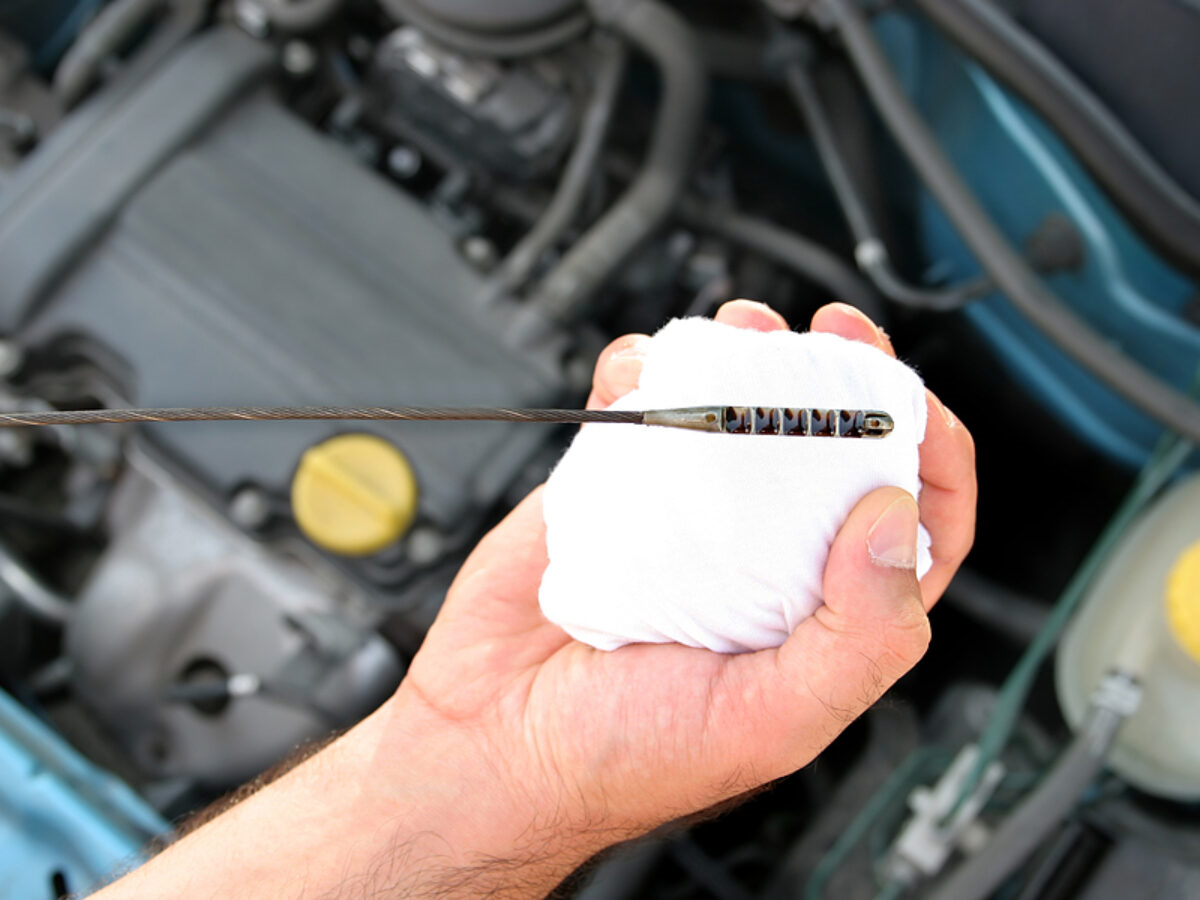
Checking your vehicle’s engine oil is a quick and simple maintenance project that almost any driver can do themselves. Even if you don’t feel up to the task of changing your own engine oil, chances are that you will be able to check it yourself. Most models should have an oil change about every three months or three thousand miles. In between your regularly scheduled oil changes, you can check your engine oil levels to ensure that it has not become too low or dirty.
Follow these simple steps to check your vehicle’s engine oil:
Find a Lint Free Rag
Locate a lint free rag or a scrap of old fabric to use when checking your oil. An old t-shirt usually works great
Read Your Owner’s Manual
If you are extremely unfamiliar with what is under the hood of your vehicle, you will find a detailed description of where your dipstick is located in your owner’s manual.
Warm Up Your Car
It is best to check your oil while it is warm. A great time to check you oil is after a quick trip to a local market or around your neighborhood.
Turn Your Car Off
Make sure that you turn your vehicle off before you begin the process of check its oil.
Pop the Hood
Pull the handle located on the inside of your vehicle, usually on the side of the driver side door, and the press the lever located underneath the center of the hood. Make sure that the hood of your car is securely propped. There’s no point in feeling embarrassed if you do not know how to open your hood. Check this short video for a clue
Locate the Dipstick
On most models, the dipstick is located on the left side of the engine. The dipstick usually has a yellow or orange circular handle that is clearly visible. When you pull this handle, a long piece of metal will slide out of the engine.
Clean the Dipstick and Reinsert
Once you locate and remove the dipstick, clean it with your rag and slide it back in. Make sure that the dipstick is inserted all the way back in.
Remove the Dipstick and Inspect
Next, remove the dipstick once more. Look at the end of the dipstick. Some models will have a line marked “full” while others will have a textured area that represents the capacity of the oil pan. The oil will appear amber in color. It should be easy to discern the oil level by looking at the dipstick.
– Normal Oil Level
If the dipstick indicates that the oil level is normal, reinsert it.
– Low Oil Level or Dirty Oil
If the dipstick indicates that the oil level is low, touch the end of the dipstick with two fingers and feel of the texture of the oil. If the oil is clean, you can add new oil using a funnel. If the oil is gritty, it is necessary to have your oil changed as soon as possible.
Checking your vehicle’s oil level is a simple task that takes only a few minutes to perform. Knowing how to check your oil will enable you to ensure that your engine is being properly lubricated.
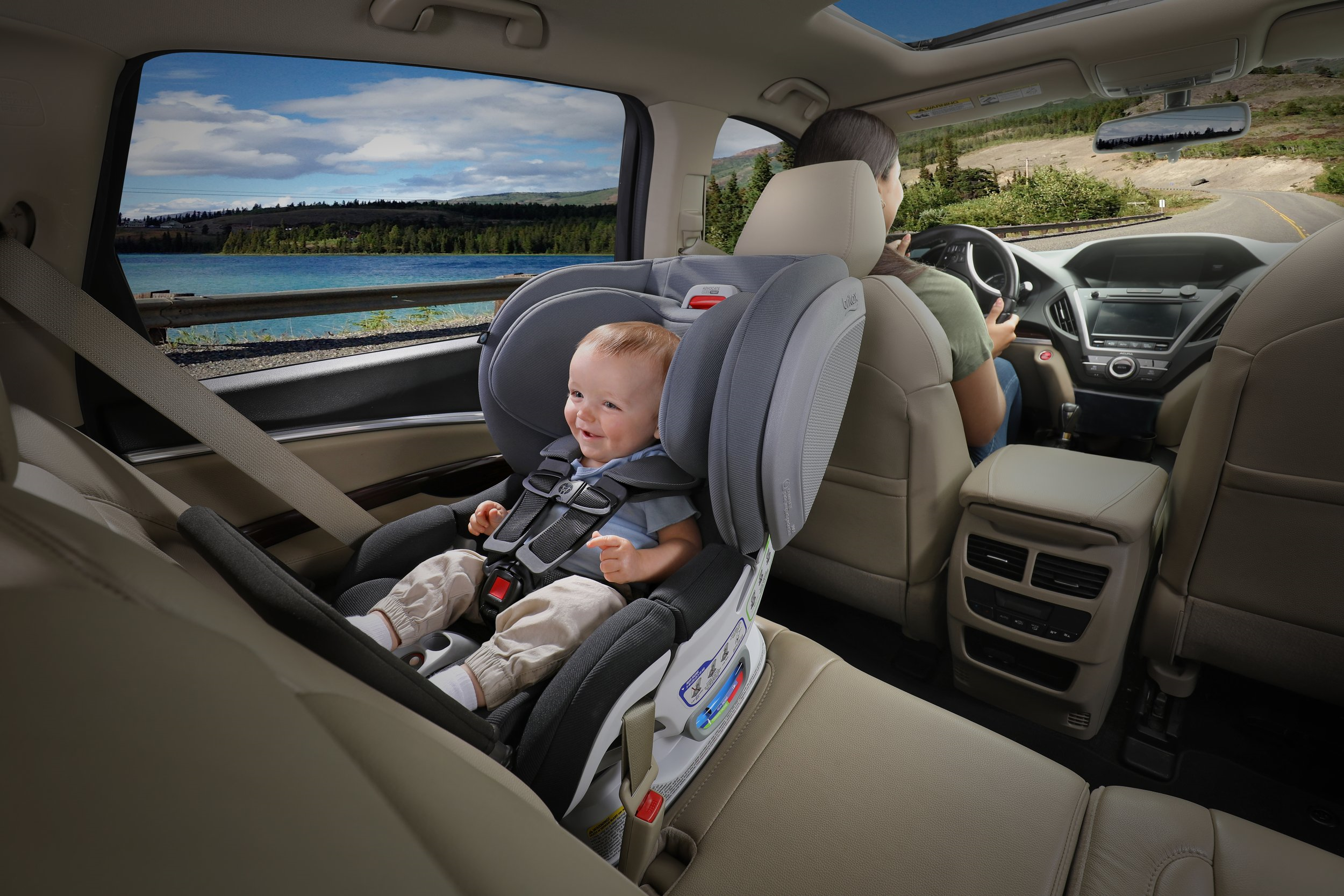
How to Ride Safely
–The back seat is the best. It is the safest place to ride for all children under age 13. Not all cars allow for a car seat in every place that has a seat belt. Check your car owner manual to see where you can put a car seat.
-Be wary of toys in the car. Choose toys that are soft and will not hurt your child in a crash. Secure any loose objects in the car.
-Wear your seat belt. We know that when adults wear seat belts, kids wear seat belts. So be a good example and buckle up for every ride. Be sure everyone in the vehicle buckles up, too.
-Never leave your child alone in a car, even for a minute. Learn more about preventing heatstroke.
-Find a Car Seat Expert. Safe Kids hosts car seat inspection events across the country where certified car seat technicians can teach you to install and use your car seat properly. In some communities, they also serve in fixed locations called inspection stations during specific days and times. You may find an inspection station at a GM dealership, a hospital or even a fire house. Find a Safe Kids car seat checkup event near you.
-The Ultimate Car Seat Guide. For parents on the go, the Ultimate Car Seat Guide offers easy-to-understand tips on how to choose and use a car seat. You can fill in your child’s age and weight to get answers personalized for your child. Available in English or Spanish.
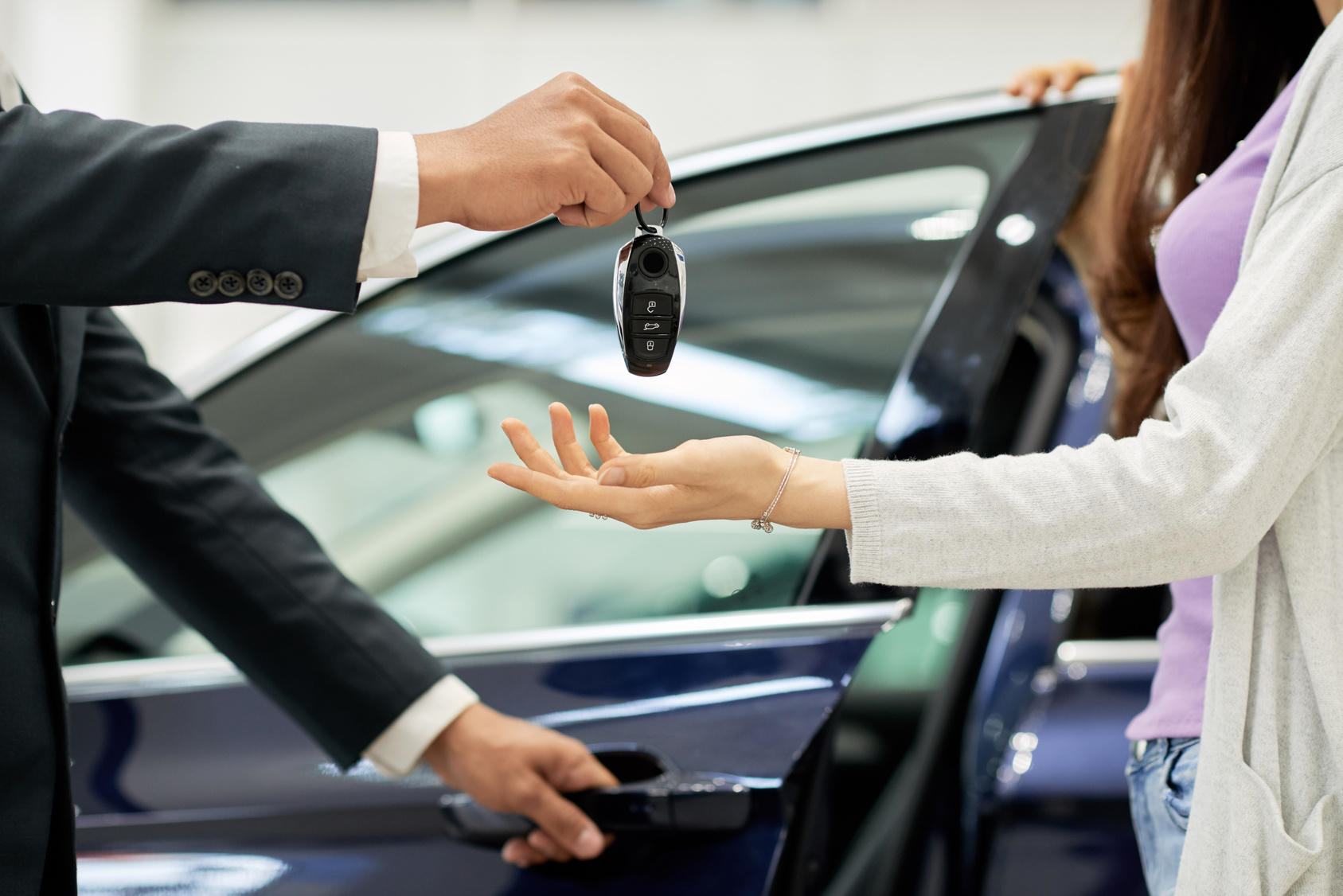
It’s appealing to buy a new car that looks great and is fun to drive, but it also pays to look beneath the surface for features that make your vehicle safe to drive and affordable to insure.
Car insurance costs are based, in part, on the model’s safety history, the cost of vehicle repair or replacement, and the likelihood that the car will be stolen. Many insurers offer discounts for vehicles with features that reduce the risk of accidents and injuries.
Here are five tips to consider when shopping for a new car:
1. Find Out the Cost of Insurance
Your insurance rates typically change when you acquire a new vehicle. Before you choose a model, the nonprofit Insurance Information Institute recommends that you ask your insurance rep how much it will cost to insure.
If you choose a sporty model that attracts buyers who enjoy driving fast, it will likely cost more to insure. If the car you pick is very expensive, it will be costly to repair or replace, and that will drive up insurance costs. A model that’s often targeted by car thieves may also cost more to insure.
2. Look for Safety Technology
One of the best things about buying a new car is all the new devices that have been developed in recent years to help drivers avoid accidents. Advanced safety features can include:
Adaptive cruise control. It detects vehicles ahead and adjusts speed to maintain a safe following distance.
Adaptive headlights. As you turn, these headlights adjust to light the road ahead.
Automatic parking. Sensors detect obstacles and adjust steering to guide vehicles safely into parking spaces.
Backup cameras. They help you see behind your car to avoid collisions.
Forward collision warning. Radar, lasers or camera sensors detect when a crash is about to occur, alerting the driver. Some systems automatically apply the brakes.
3. Consider Vehicle Design and Size
Design characteristics are important when choosing a new car. Larger and heavier vehicles typically sustain less damage in auto crashes than small cars. Some small utility vehicles and pickups are prone to rollover accidents.
In addition to considering size, look for cars that have “crashworthy” designs. These cars have strong “safety cages,” the section of the vehicle that protects the occupants. Make sure that the front and rear ends are “crush zones” that can absorb the impact of crashes.
You can look up car safety rankings by using the Insurance Institute for Highway Safety’s online safety rankings tool.
4. Get Pre-Approved for a Car Loan
Edmunds.com recommends that you get pre-approved for a car loan before you begin shopping for a new car. Check with several lenders to get the lowest interest rate. Once you have loan approval, you’ll know how much you can afford to spend. You’ll also have an interest rate you can use to compare with those offered by the new car dealer’s financing. In some cases, the dealer may offer the best financing deal.
Before you begin shopping for a loan, gather documents to verify your income and the balances of any debts you may have.
5. Negotiate the Best Price
A good negotiator usually can get a better deal than someone who simply agrees to pay what the dealer is asking. Dealers may price their cars higher than the amount they actually expect to receive in preparation for negotiations.
If you take time to research prices online before you visit a dealership, you’ll have a better idea of what a competitively priced car should cost. Often, the best time to buy is during end-of-the-year sales, when dealers need to make room for newer models, notes the Las Vegas Review-Journal.
Negotiate the actual price of the car rather than the monthly payment. Focusing on payments makes it easy to lose sight of the full amount you’ll be paying over time, says Autotrader.4
If you can’t get the price you want, don’t be afraid to walk away. Remember there’s always another car.

Congratulations on your new driver’s license! Your license is an exciting step toward independence and adulthood, but it’s also a big responsibility. Remember, what you do in the driver’s seat not only affects you but everyone else on the road, too.
We’ve put together some of the best tips for new drivers to help you stay safe and have fun on the road.
1. OBEY ALL TRAFFIC RULES
From road signs to right-of-way, there are rules drivers are required to understand and follow. Following the speed limit, leaving adequate space between you and the car in front of you, obeying traffic signals, and wearing your seatbelt are just a few of them. Learning and applying traffic rules will help you have a safe and relaxed time on the road — and it will help the other drivers around you be safe and relaxed, too. Plus, following traffic rules can help keep you away from traffic tickets, which are expensive and could raise your car insurance rates.
2. SLOW DOWN!
According to CDC.gov, “Teens are more likely than older drivers to speed and allow shorter headways (the distance from the front of one vehicle to the front of the next).” The higher your speed, the less time you have to stop your car, and the worse any impact and subsequent injuries will likely be. Braking distance increases exponentially at speeds over 45 MPH.
3. KEEP YOUR CAR IN GOOD RUNNING SHAPE
Taking care of your car can help you avoid breakdowns and other potential accidents. Car care includes regular oil changes and tune-ups, checking tire pressure (don’t forget the spare!), regular tire rotation, checking brake fluid and coolant levels, and filling up the gas tank before it hovers too close to “E.” For your car to take care of you, you need to take care of it. As a new driver, don’t add to the variables of being behind the wheel by letting your car maintenance slide.
4. WEAR YOUR SEAT BELT
Always. And make sure your passengers wear theirs, too. “Among teen drivers and passengers 16–19 years of age who died in car crashes in 2018, almost half were unrestrained at the time of the crash (when restraint use was known),” reports CDC.gov.
5. AVOID DISTRACTIONS
Distracted driving claimed 2,841 lives in 2018 alone, reports the National Highway Traffic Safety Administration. So keep your eyes on the road. That means no texting, no calling, no eating, no channel surfing on the radio, and no turning around to talk with friends in the backseat. Accidents can happen in a split second, but if you’re paying attention, you’ll have a better chance of avoiding one.
One of the best tips for new drivers is to take the time to set yourself up for your drive while you’re still in your driveway. Choose your music, set your GPS, put your phone on Do Not Disturb, and make sure any important communication is completed or paused before your drive.
6. ADJUST YOUR ACCESSORIES
No, not your bling. We’re talking about making sure your seat is in a comfortable spot and checking all mirrors to make sure they give you visibility of your car’s blind spots. How to check? A vehicle overtaking from behind you should start to appear in the side mirror just as it’s disappearing from the center rear view mirror. As a tip for new drivers, especially, do this before you start your drive, not when your vehicle is moving.
7. DON’T TAILGATE
Following too closely is a leading cause of rear-end accidents. Just remember the 3-second rule: Pick an object on the road ahead (like a sign, tree, or overpass), and when the vehicle in front of you passes the object slowly count “one-one thousand, two-one thousand, three-one thousand.” If you reach the object before completing the count, you’re following too closely.
Remember: if the car in front of you slams on their brakes and you rear-end them, it could mean a ticket for you, a lawsuit from the other driver, and an expensive bill from your insurer.
8. BE PREPARED
In case of accidents, breakdowns, or other emergencies, your car should always contain critical driving documents and an emergency kit with everything you’d need for an extended time in your vehicle. Ensure you have things like your vehicle registration, proof of insurance, and driver’s license handy. A good emergency kit also includes water, non-perishable snacks, an emergency blanket, flashlights, road hazard cones and possibly flares, jumper cables, essential tools, and a small amount of the oil and coolant your car requires.
9. WATCH THE WEATHER
Rain, wind, and snow can all make driving more difficult and dangerous. If it’s wet out, make sure your headlights are on, slow down, and increase your following distance. Braking takes longer when roads are slick — sometimes as much as ten times the braking distance as on a dry roadway. Most importantly, if the conditions are too treacherous, it’s better to stay off the roads until you’ve mastered the art of winter driving.
10. DON’T DRIVE UNDER THE INFLUENCE
Driving under the influence includes being under the influence of alcohol, drugs, or lack of sleep. Nobody should have to tell you how severe the consequences can be. Just don’t do it. Request a rideshare or call a friend or loved one to take you where you need to be.
Now get out there and drive! Practice makes perfect.